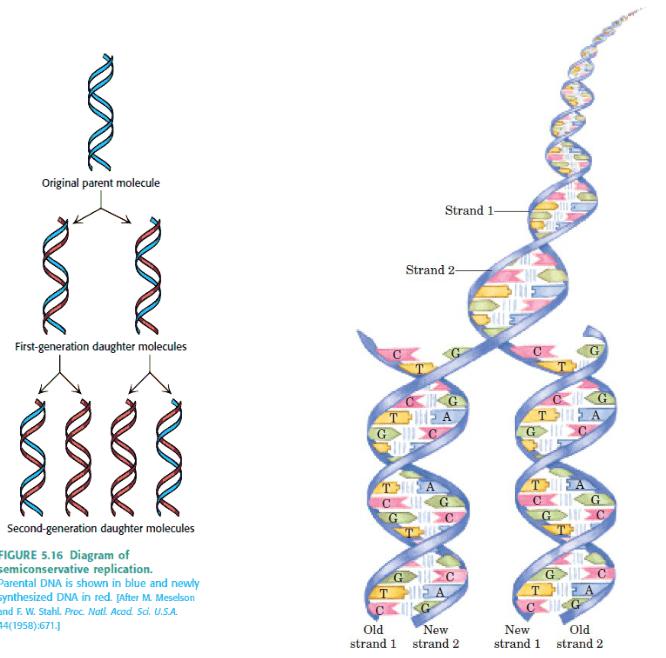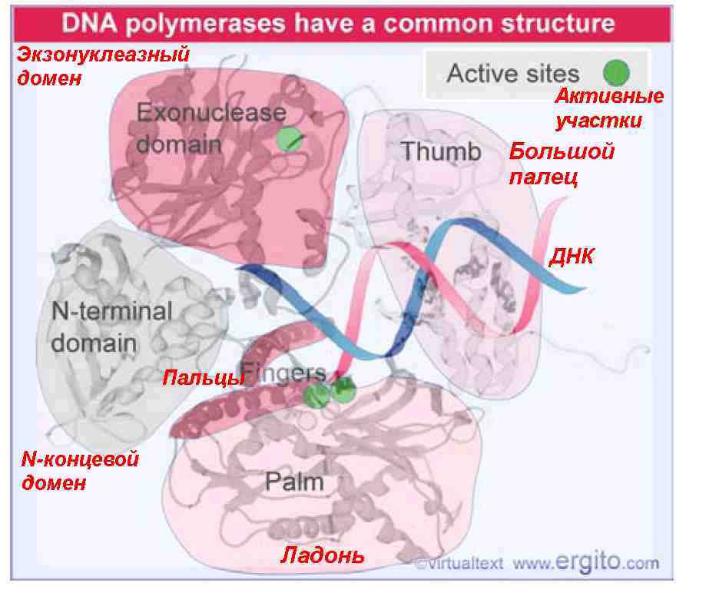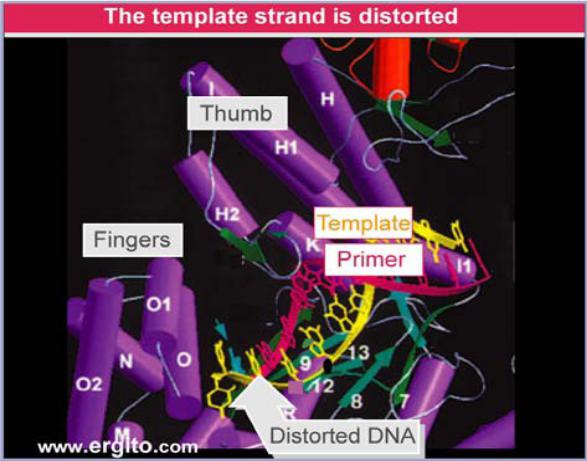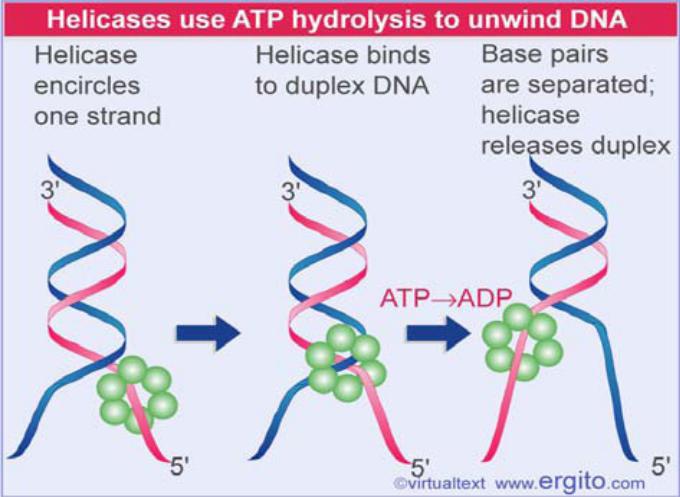
- •Key Terms
- ••Nick translation describes the ability of E. coli DNA polymerase I to use
- •The common organization of DNA polymerases has a palm that contains the catalytic
- •The crystal structure of phage T7 DNA polymerase shows that the template strand
- ••The leading strand of DNA is synthesized continuously in the 5’-3’ direction.
- ••A helicase is an enzyme that uses energy provided by ATP hydrolysis to
- •A hexameric helicase moves along one strand of DNA. It probably changes conformation
- •Priming is required to start DNA synthesis
- •Coordinating synthesis of the lagging and leading strands
- •DNA polymerase III holoenzyme assembles in stages, generating an enzyme complex that synthesizes
- •The clamp controls association of core enzyme with DNA
- •Okazaki fragments are linked by ligase
- •Similar functions are required at all replication forks
- •Репликационный глазок
- •Creating the replication forks at an origin
- •Терминация – встреча вилок
- •DNA REPLICATION Summary
Key Terms
•The replicon is a unit of the genome in which DNA is replicated. Replicons can be linear or circular. Each replicon contains an origin for initiation of replication.
•The origin is a sequence of DNA at which replication is initiated.
•A terminus is a segment of DNA at which replication ends.
•A replication eye is a region in which DNA has been replicated within a longer, unreplicated region.
•A replication fork (Growing point) is the point at which strands of parental duplex DNA are separated so that
replication can proceed. A complex of proteins including DNA polymerase is found at the fork.
•Unidirectional replication refers to the movement of a single replication fork from a given origin.
•Bidirectional replication describes a system in which an origin generates two
•replication forks that proceed away from the origin in opposite directions.
•S phase is the restricted part of the eukaryotic cell cycle during which synthesis of DNA occurs.
Key Concepts
A replicated region appears as an eye within nonreplicated DNA.
A replication fork is initiated at the origin and then moves sequentially along DNA.
Replication is unidirectional when a single replication fork is created at an origin.Eukaryotic replicons are 40-100 kb in length.
Each eukaryotic chromosome contains many replicons.
Individual replicons are activated at characteristic times during S phase.
Regional activation patterns suggest that replicons near one another are activated at the same time.


•Nick translation describes the ability of E. coli DNA polymerase I to use a nick as a starting point from which one strand of a duplex DNA can be degraded and replaced by resynthesis of new material; is used to introduce radioactively labeled nucleotides into DNA in vitro.
•DNA polymerase I has a unique 5’–3’ exonuclease activity that can be combined with DNA synthesis to perform nick translation.

The common organization of DNA polymerases has a palm that contains the catalytic site, fingers that position the template, a thumb that binds DNA and is important in processivity, an exonuclease domain with its own active site, and an N-terminal domain.

The crystal structure of phage T7 DNA polymerase shows that the template strand takes a sharp turn in order to be exposed to the incoming nucleotide.
•The leading strand of DNA is synthesized continuously in the 5’-3’ direction.
•The lagging strand of DNA must grow overall in the 5’-3’ direction and is synthesized discontinuously in the form of short fragments (5’-3’ ) that are later connected covalently.
•Okazaki fragments are the short stretches of 1000-2000 bases produced during discontinuous replication; they are later joined into a covalently intact strand.
•Semidiscontinuous replication is mode in which one new strand is synthesized continuously while the other is synthesized discontinuously.
•A helicase is an enzyme that uses energy provided by ATP hydrolysis to separate the strands of a nucleic acid duplex.
•The single-strand binding protein (SSB) binds to single-stranded DNA, thereby preventing the DNA from forming a duplex.

A hexameric helicase moves along one strand of DNA. It probably changes conformation when it binds to the duplex, uses ATP hydrolysis to separate the strands, and then returns to the conformation it has when bound only to a single strand.
Priming is required to start DNA synthesis
•Key Terms
•A primer is a short sequence (often of RNA) that is paired with one strand of DNA and provides a free 3’-OH end at which a DNA polymerase starts synthesis of a deoxyribonucleotide chain.
•The primase is a type of RNA polymerase that synthesizes short segments of RNA that will be used as primers for DNA replication.
•Key Concepts
•All DNA polymerases require a 3’ –OH priming end to initiate DNA synthesis.
•The priming end can be provided by an RNA primer, a nick in DNA, or a priming protein.
•For DNA replication, a special RNA polymerase called a primase synthesizes an RNA chain that provides the priming end.
•Priming of replication on double-stranded DNA always requires a replicase, SSB, and primase.
•DnaB is the helicase that unwinds DNA for replication in E. coli.
